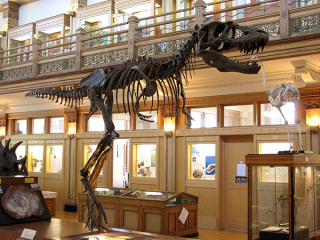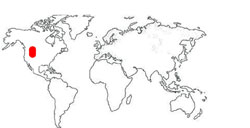

For many years, the name Albertosaurus referred to a large number of tyrannosaurids. We know that this specimen is in fact a Gorgosaurus, a species that lived about five million years before Albertosaurus.
Species: Gorgosaurus libratus
Family: Tyrannosauridae
Group: Theropoda
Name means: Fierce Lizard
Adult Size: 8 metres long (26 ft)

Source: Matt Martyniuk. Accessed at the Wikipedia Commons. License terms.
Weight: 1000 kg (1 tonne)
Age at death: Teenager, only about 70% full-grown adult size.
Lived during: Late Cretaceous (74 million years ago)
Diet: Meat
Known distribution: Southern Alberta and parts of Montana

Image credit: Bruno Paul Stenson (Redpath Museum)
Behaviour: This group of dinosaurs probably lived and hunted in packs
Discovery: Found in Dinosaur Provincial Park, Alberta, by Levi Sternberg in 1920. The original fossil bones are at the Royal Ontario Museum.
Other info: In comparison to the related Tyrannosaurus rex, the Gorgosaurus was 2/3 smaller but probably ran faster and had a few more teeth. The two small forearms had two clawed digits or fingers. The teeth had serrated edges like a steak knife for sawing flesh.

Image credit: Adrian Bobb (Redpath Museum)